Key takeaways:
- Student success encompasses emotional wellbeing, personal growth, and resilience, not just academic performance.
- Measuring success through diverse metrics like soft skills and attendance provides a holistic view of student progress.
- Utilizing data analysis and feedback can transform teaching strategies and foster deeper student engagement.
- Strategies like promoting a growth mindset and project-based learning enhance student outcomes and motivation.
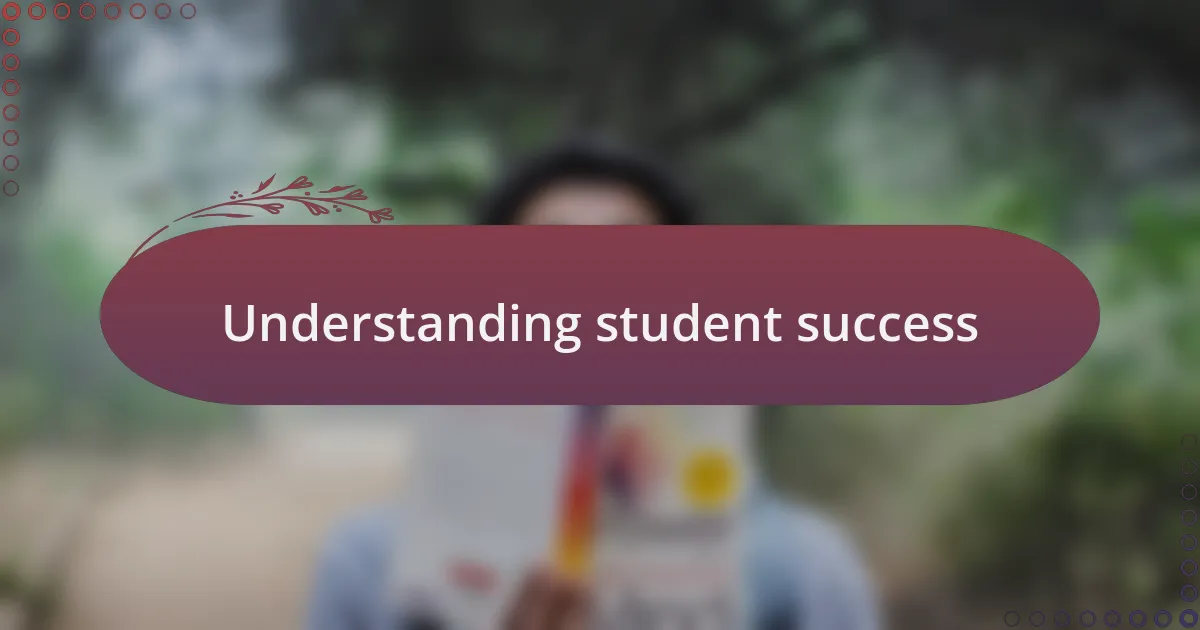
Understanding student success
Understanding student success is not just about grades; it encompasses emotional wellbeing, personal growth, and the ability to navigate challenges. I often reflect on my own educational journey, where my successes were tied to moments of resilience rather than just academic achievements. How can we measure the emerging skills that aren’t neatly reflected on a report card?
When I think back to a student I mentored, it wasn’t their highest test score that marked their success, but rather their transformation from avoiding challenges to embracing them. It struck me how pivotal that shift was; it said so much about their developing confidence and problem-solving skills. Have we considered how the traits that students cultivate alongside their academic knowledge contribute to their overall success?
In my experience, fostering a growth mindset is crucial. Success can be seen when students understand that setbacks are part of learning. Does this not highlight the importance of teaching resilience and encouraging curiosity, shaping not just successful students but well-rounded individuals prepared for life beyond school?
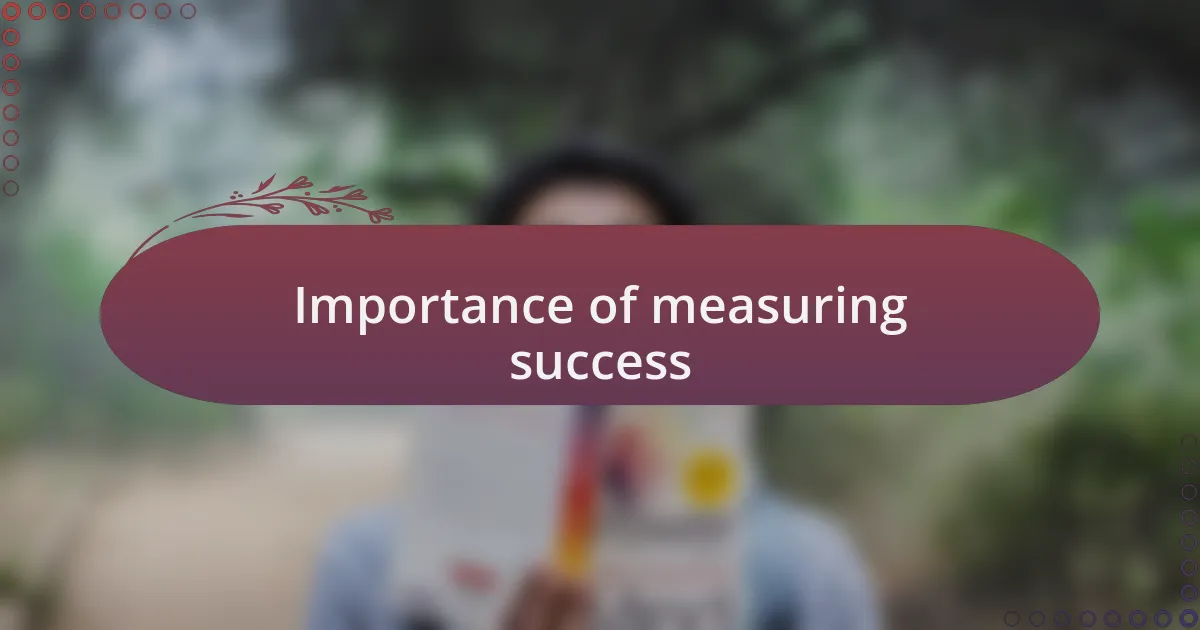
Importance of measuring success
Measuring success is essential because it helps educators identify the strengths and weaknesses of their students. I remember working with a bright student who struggled in math, yet excelled in creative writing. By recognizing these nuances, I was able to tailor my support, boosting their confidence and ultimately allowing them to find success in both subjects. Isn’t it fascinating how a detailed understanding of a student’s progress can transform the way they view their own abilities?
Furthermore, the act of tracking success provides valuable feedback that informs teaching strategies and curriculum design. In a project I facilitated, we collected data from various assessments and self-reports. This multifaceted approach not only highlighted academic achievement but also revealed social and emotional growth, shaping a more holistic educational environment. Have we fully grasped the potential of such comprehensive insights in guiding students on their personal pathways?
Ultimately, measuring success also fosters a sense of accountability among students. When I began incorporating self-assessment tools in my classes, I noticed a shift in student motivation. They began to take ownership of their learning journeys, reflecting on their challenges and celebrating even small victories. Isn’t it empowering for students to engage in this process, making them active participants in their own success stories?

Common metrics for student success
When discussing common metrics for student success, academic performance is often the first that comes to mind. For instance, I once analyzed a student’s exam scores over the year, and while their grades were a clear indicator of progress, they didn’t tell the whole story. I learned that pairing these scores with classroom participation offered a more comprehensive view of the student’s engagement and understanding—did you ever consider how much interaction in class can reflect true learning?
Another vital metric is attendance, which I’ve found correlates strongly with student achievement. I recall observing a student who frequently missed classes; despite having strong capabilities, their inconsistent presence hindered their learning experience. It made me question—how can we address attendance in ways that not only hold students accountable but also motivate them to be present?
Additionally, soft skills play a significant role in defining success. My experience in group projects revealed that collaboration and communication skills often led to better overall outcomes. It makes me wonder: Shouldn’t we also celebrate these attributes alongside traditional academic achievements? They often pave the way for lifelong success, reflecting the importance of a well-rounded education.
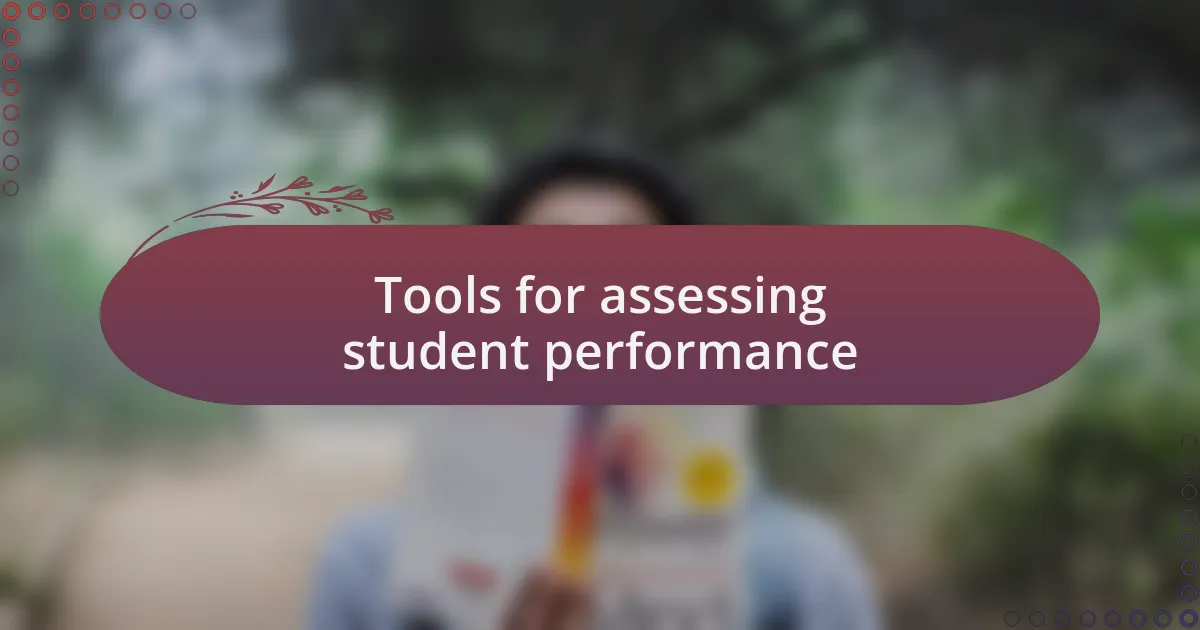
Tools for assessing student performance
When evaluating student performance, I often rely on a diverse set of tools that go beyond traditional assessments. For instance, I’ve used digital portfolios where students showcase their best work over the semester. It was fascinating to see how much pride they took in curating their accomplishments—have you ever noticed how reflecting on their own progress can boost a student’s confidence?
Another tool that I frequently implement is formative assessments like quizzes and polls during lessons. I vividly recall a moment when I used a quick online quiz to gauge understanding after a new topic. The instant feedback allowed me to adjust my teaching on the spot, enhancing student engagement. Isn’t it empowering to know that immediate insights can fine-tune the learning experience in real-time?
Lastly, peer assessments serve as a powerful method for gauging student performance. In my experience, when students evaluate each other’s work, they often develop a critical eye and a deeper understanding of the subject matter. I remember a group that became more invested in their learning journey as they offered constructive feedback to their peers. How great would it be if we could all encourage this sense of ownership in the classroom?

Analyzing data for insights
Analyzing data for insights is an essential practice that can significantly enhance the educational experience. I remember sifting through student test results after a major assessment; it was astonishing how clear patterns emerged regarding strengths and weaknesses. Have you ever had that “aha!” moment when the data unveils something you hadn’t noticed before? It’s almost like solving a puzzle, where each piece brings you closer to understanding how to tailor your approach effectively.
When I delve into data analysis, I often look at trends over time rather than just snapshot results. For example, tracking attendance and participation alongside grades revealed some surprising correlations. I once supported a student who struggled academically but thrived in collaborative environments. She blossomed when I recognized her patterns through data, which prompted me to create more group activities. How rewarding it is when data not only informs teaching but also transforms a student’s journey!
Lastly, qualitative data—like student feedback—provides a rich context that numerical data may overlook. I recall a particularly insightful comment about classroom dynamics from a student that influenced how I approached discussions. Their perspective gave me a fresh lens to view classroom interactions. Isn’t it enlightening to realize that student voices are instrumental in shaping the learning atmosphere? Engaging with data holistically not only enhances our strategies but also fosters a more inclusive and responsive educational environment.
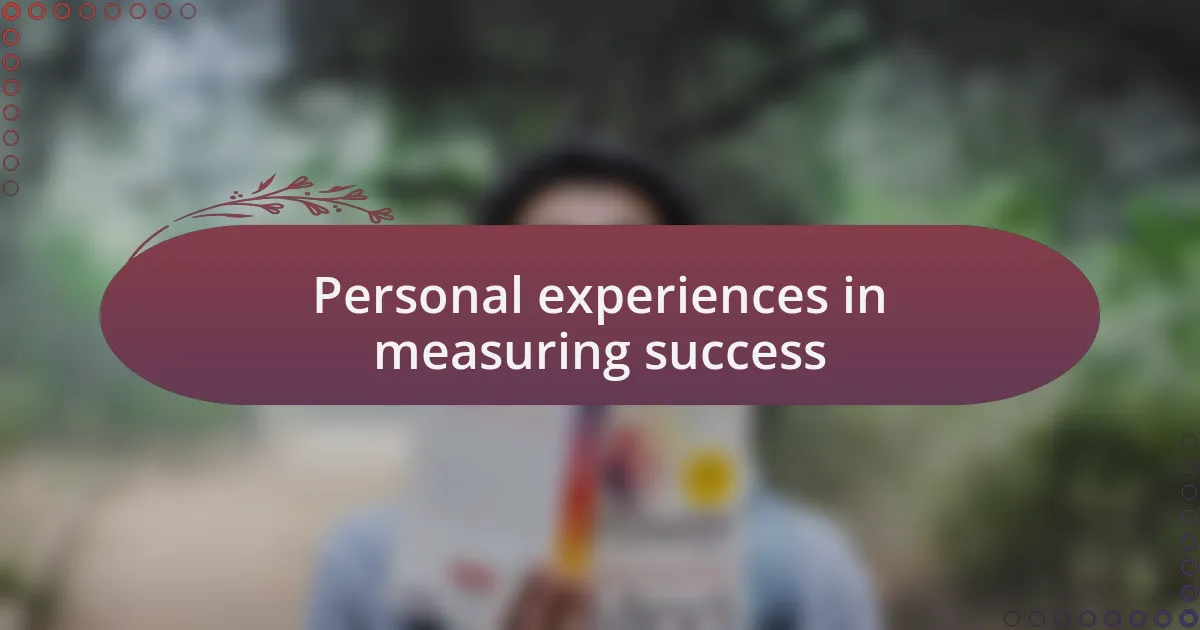
Personal experiences in measuring success
Measuring student success isn’t just about numbers; it’s also about capturing the stories behind them. I remember a student who consistently scored low on tests but had an exceptional talent for drawing. One day, I asked her to illustrate our history lesson instead of writing a paper. The pride in her eyes when she presented her work was priceless. Have you experienced a transformation like that in your classroom?
When I reflect on my journey, I often emphasize the importance of emotional and social growth alongside academic achievements. One year, I had a student who excelled as a leader in group projects yet struggled to raise his hand in class. By encouraging him to lead discussions, I watched him bloom. It was a reminder that success wears many faces, and sometimes, we must look beyond grades to truly celebrate a child’s progress.
Additionally, I’ve found that informal interactions often reveal profound insights about student success. I recall standing by the water cooler when a quiet student approached me, excitedly sharing how he had helped a classmate understand a difficult concept. That moment struck me; his understanding of success was not just personal achievement but also lifting others. Isn’t it fascinating how these little conversations can highlight a deeper understanding of success among students?
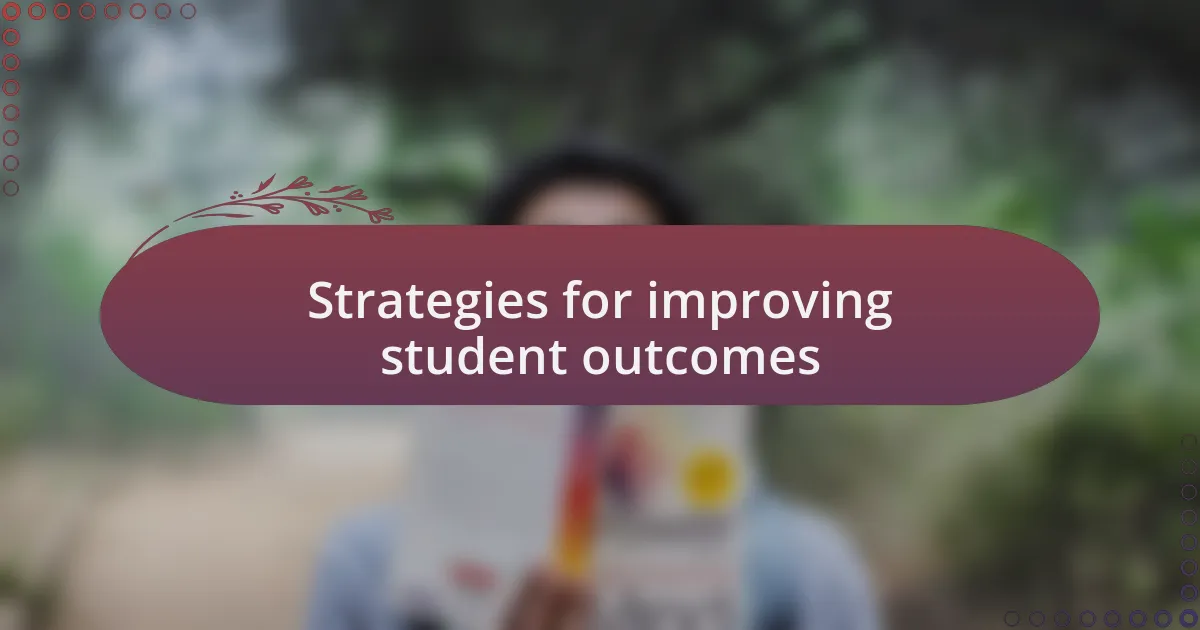
Strategies for improving student outcomes
One effective strategy I’ve implemented to improve student outcomes is fostering a growth mindset. I recall a student who believed he wasn’t good at math; he would often shut down when faced with challenging problems. By celebrating small victories and reframing failures as opportunities for growth, I watched him gradually take on more complex tasks. Can you think of similar moments in your practice where framing challenges positively made a difference?
Another approach that has worked wonders in my experience is integrating project-based learning. I had a group of students create a community garden project, which not only taught them about the environment but also emphasized teamwork and problem-solving skills. They were incredibly engaged, and I saw their academic scores improve alongside their confidence. Isn’t it remarkable how connecting learning to real-world applications can spark enthusiasm in students?
Moreover, I’ve discovered the power of personalized feedback in enhancing student outcomes. When I took the time to meet with students individually and discuss their progress, I noticed they felt more valued and understood. One student expressed that my feedback made her eager to improve rather than feel defeated. Why do you think personalized attention resonates so deeply with learners? It’s these small interactions that can cultivate a sense of belonging and motivation in the classroom.